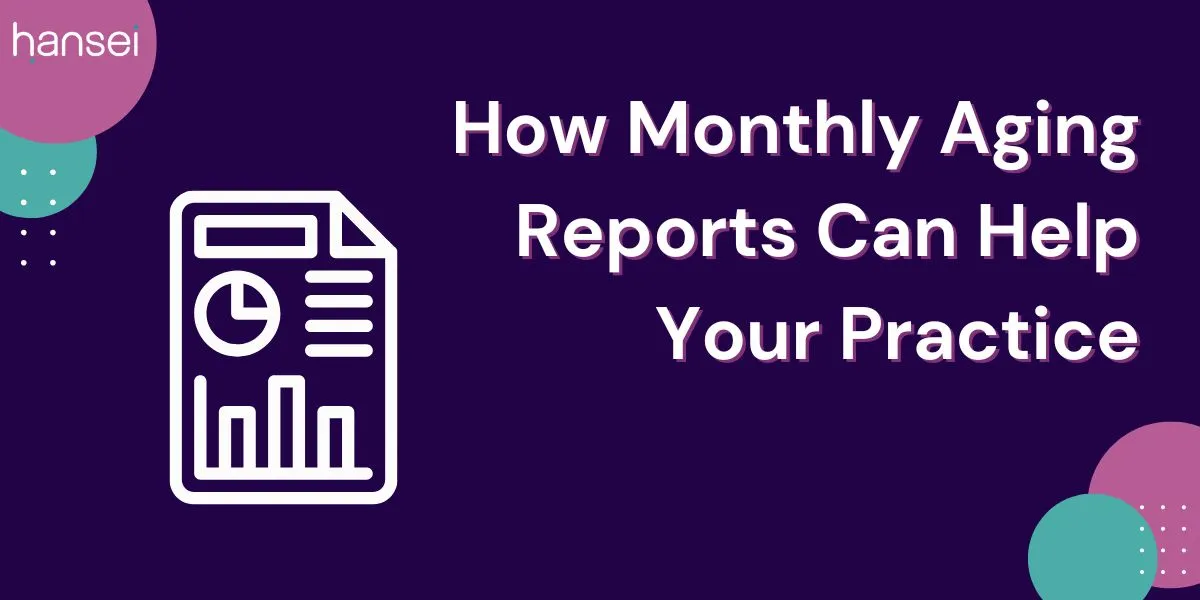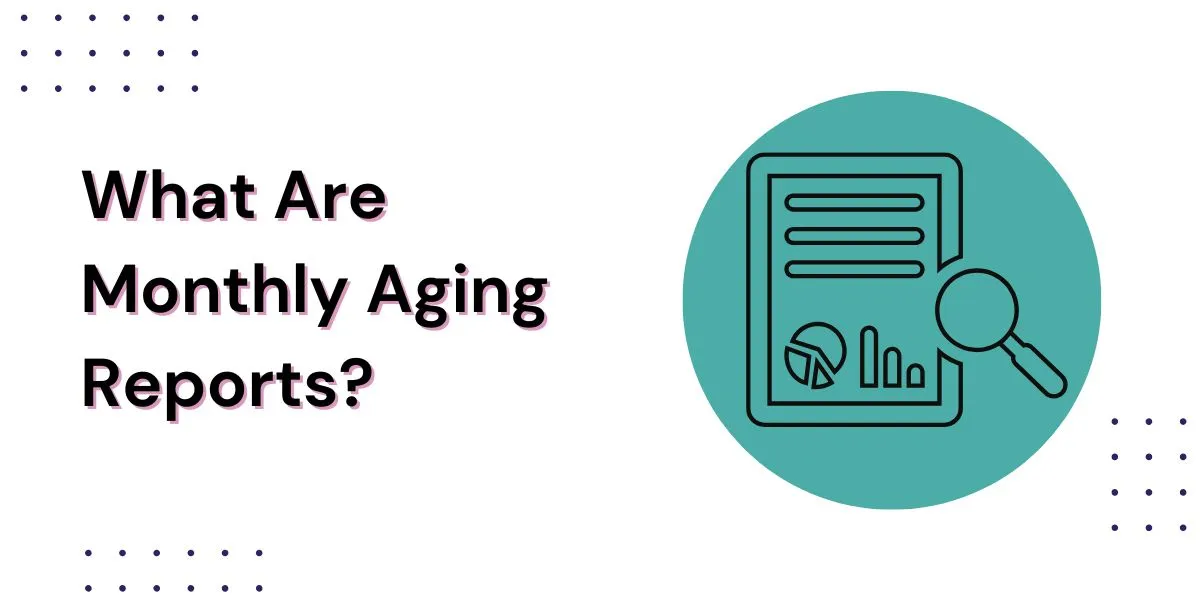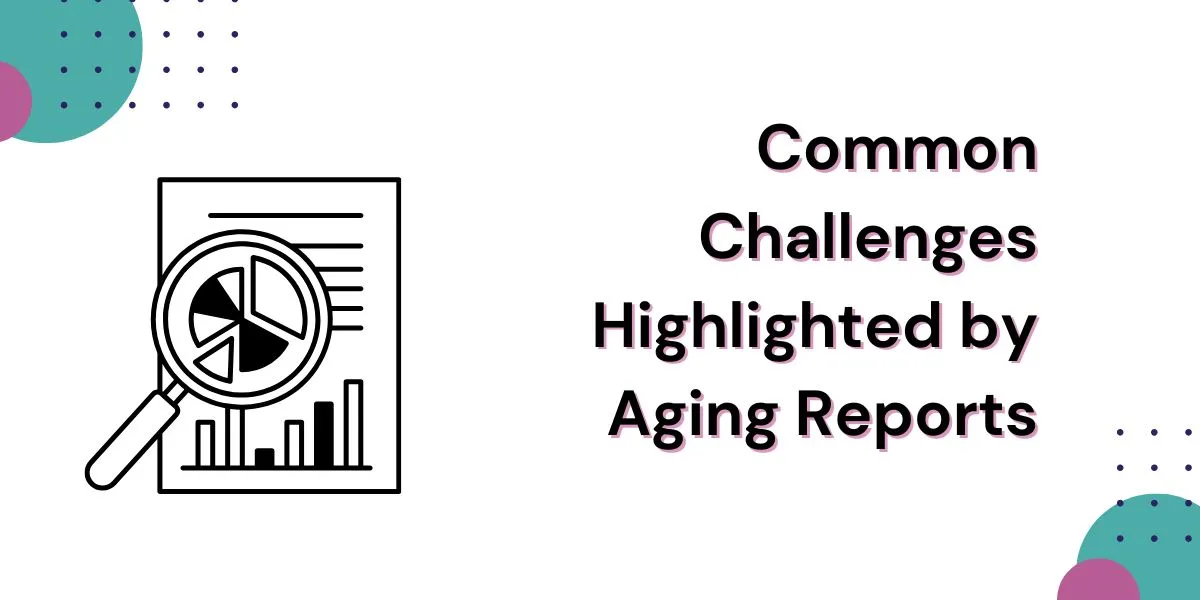Blog

For healthcare providers, managing revenue effectively is just as important as delivering excellent patient care. One of the most valuable tools in revenue cycle management is the monthly aging report. These reports track unpaid balances by categorizing accounts receivable according to the length of time they’ve been outstanding—typically broken down into 30, 60, 90, or 120+ day intervals.
At Hansei Solutions, we know that monthly aging reports provide more than just numbers; they offer insight into the overall financial health of a practice. By reviewing these reports regularly, providers can identify trends, improve cash flow, and strengthen their relationships with payers and patients alike.

What Are Monthly Aging Reports?
Monthly aging reports are detailed breakdowns of accounts receivable (AR) that show how long balances have remained unpaid. Instead of lumping all receivables together, these reports sort them into categories:
- 0–30 days
- 31–60 days
- 61–90 days
- 91–120+ days
This structure allows practices to spot overdue accounts and prioritize collections. For example, if a significant percentage of receivables are over 90 days, it signals that follow-up is needed—whether with payers on delayed claims or with patients on outstanding balances.
Why Monthly Aging Reports Matter
Monthly aging reports help practices move beyond reactive billing and toward proactive financial management. They:
- Improve cash flow by identifying overdue accounts quickly.
- Highlight payer issues, such as recurring delays or denials.
- Track patient responsibility, making it easier to follow up on unpaid balances.
- Provide insight for decision-making, such as staffing needs or policy changes.
By consistently monitoring AR through monthly aging reports, providers gain a clear picture of their practice’s financial standing and can act before issues escalate.

Common Challenges Highlighted by Aging Reports
Monthly aging reports often reveal patterns that signal deeper problems in the revenue cycle. Some of the most common issues include:
- High volumes of claims stuck in the 60–90 day range due to payer denials.
- Patient balances that remain uncollected because of unclear billing communication.
- Administrative bottlenecks where claims are submitted late or without proper documentation.
When left unaddressed, these issues can drain resources and impact a practice’s ability to invest in patient care.
How Hansei Solutions Uses Monthly Aging Reports
At Hansei Solutions, we help practices leverage monthly aging reports as strategic tools rather than just financial snapshots. Our approach includes:
- Reviewing reports to identify root causes of delayed payments.
- Streamlining billing processes to reduce aging accounts.
- Training staff to address payer requirements and improve claim accuracy.
- Supporting patient financial communication to increase timely payments.
By turning monthly aging reports into action plans, we help providers recover revenue faster and strengthen overall financial stability.
FAQs About Monthly Aging Reports
How often should a practice review aging reports?
While monthly reviews are standard, high-volume practices may benefit from weekly check-ins to catch issues earlier.
What percentage of receivables should be under 30 days?
Ideally, the majority of receivables should fall into the 0–30 day category. Large amounts in the 90+ day column may indicate systemic problems.
Can monthly aging reports help with payer disputes?
Yes. These reports highlight delays and denials, providing evidence when negotiating with payers.
Do aging reports only track insurance claims?
No. They also track patient balances, which are increasingly important as patients take on higher out-of-pocket costs.
How does Hansei Solutions support practices with aging reports?
We interpret the data, resolve payer and patient delays, and implement solutions to improve financial performance.
Using Monthly Aging Reports to Your Advantage
Monthly aging reports are more than just accounting documents—they are diagnostic tools that reveal the financial health of a practice. By reviewing these reports regularly, providers can anticipate problems, strengthen payer and patient relationships, and maintain a steady cash flow. Hansei Solutions helps practices take full advantage of aging reports by turning data into strategies that support long-term success.

Ready to focus on providing healthcare? Let us lighten your load.
We’re here to address your pain points and create growth opportunities for your organization. We’re passionate about what we do, and it shows in every interaction. Learn what makes us tick and schedule a demo today.